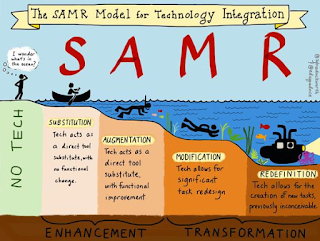eTwinning has always been an agent for change. Back in 2005,
it was one of the first European Actions to emphasise and focus of what were
then referred to as “ICT Skills” and their implementation and embedding within
different subjects in the curriculum. eTwinning has always prided itself of
being a “dynamic” action, as one that responds to the needs of the current
educational frameworks and 21st Century Learning competences.
If one had to scrutinise the criteria of what many NSS
consider to be a pedagogically sound eTwinning Project, the following skills
and criteria immediately stand out: a project must be collaborative in nature,
creative and innovative, and foster communication, problem solving and critical
thinking amongst all teachers and pupils.
Essentially, being involved in eTwinning, helps foster these skills in
those involved and serve as an example for the ones who are standing close.
eTwinning can change the way educators look at the infrastructure;
at how the foundation blocks of digital literacy are “built”. Taking the cue
from the SAMR Model – Substitution, Augmentation, Modification and Redefinition
- eTwinning can be truly see as an
“agent of change in our classrooms”. A platform, a set of tools, which goes
beyond merely substituting one
methodology with another, or just a way of making lessons more interesting
(augmentation). eTwinning is about a change in Educators’ mindset, in the way
learning is defined. Students become more in charge of their learning, and, in
the process, they learn to ask questions, to investigate, to “not accept” all
that is presented in front of them, but to be critical and self-evaluating.


No comments:
Post a Comment